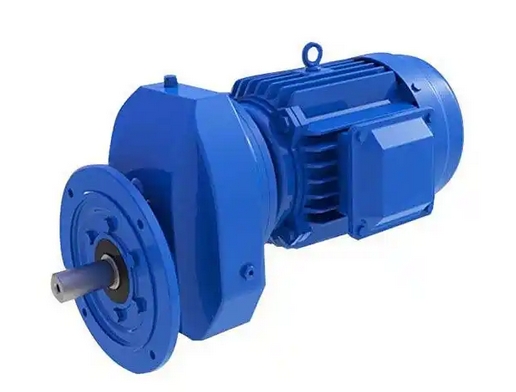How to improve the operating conditions of RXF67-3KW-6.08 hard tooth surface gear reducer
Improving the operating conditions of the RXF67-3KW-6.08 hard tooth surface gear reducer can be approached from the following aspects:
Correct installation and alignment: During installation, ensure that the concentricity deviation between the input shaft of the reducer and the motor shaft, as well as the output shaft and the load shaft, is less than 0.05mm. It is recommended to use a laser alignment instrument for calibration and retest after 24 hours of operation to reduce issues such as increased bearing wear and excessive vibration caused by misalignment.

Reasonable selection and load matching: Based on the actual working load, calculate the actual torque to ensure a safety margin of 15% -20% is left during selection to avoid overloading operation.
Optimize lubrication management: Select lubricating oil with appropriate viscosity according to the ambient temperature. For example, ISO VG68 lubricating oil is used when the ambient temperature is below 0 ℃, and VG220 or above is used for high temperature conditions. At the same time, to control the liquid level of the oil tank, it is necessary to cover 1-3 times the tooth height of the large gear. Replace the lubricating oil after the first 300 hours of operation, and replace it every 5000 hours or when the oil contamination exceeds the standard.
Gear shaping: Tooth surface shaping techniques can be used, such as tooth tip shaping, to remove a certain amount of material from the tooth tip, avoid excessive interference between the tooth tip and the root of the opposing gear, and reduce stress concentration; Tooth root shaping, adding transition rounded corners at the tooth root to improve stress distribution, enhance tooth root strength and bending fatigue resistance; Tooth profile modification can also be performed, such as helix angle modification, tooth end modification, etc., to make the load distribution more uniform.
Improve gear machining accuracy: Strictly control the tooth profile error, tooth pitch error, tooth orientation error, etc. of the gear to ensure the accuracy and stability of gear meshing, and reduce friction and loss. At the same time, optimize the tooth surface roughness and use high-precision machining processes to reduce roughness and friction coefficient.
Monitoring and maintenance: Establish a regular inspection system and record vibration, temperature, and noise data every 500 hours. Using an online oil analyzer to detect metal particle content and predict gear wear trends. Install an infrared thermal imager to monitor the temperature of the gearbox casing, ensuring that the temperature of the gearbox casing is below 85 ℃ and the vibration value meets the ISO 10816 standard.
Improving working environment: For harsh environments with high levels of dust and water vapor, choose a gearbox with IP65 protection level, and regularly inspect components such as oil seals and ventilation plugs. Conduct sealing performance tests every quarter to prevent dust and water vapor from entering and accelerating gear wear.

